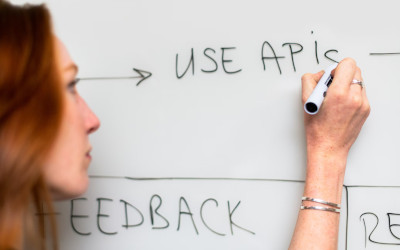
The word “headless” refers to a system where the front-end (what the customers see) is separated from the back-end (the one that manages product data, orders, customer information, etc.). Headless e-commerce is therefore a solution where the customer-visible part of the e-store is separated from the back-end of the e-store, and communication between the two parties takes place via the API protocol. The opposite of headless architecture is a monolithic application.
In most cases, e-commerce platforms have a close connection between the front-end and the back-end. For example, if you use a standard WooCommerce or Magento e-store, by default they have a monolithic architecture, i.e. front-end and back-end are tightly connected.
Why should an e-shop use the headless approach?
Flexibility and customization
Since the front-end is separated from the back-end, developers can create customized customer experiences without affecting back-end functionality. This means you can change the look and functionality of your online store to suit your needs.
Multi-platform
With the headless approach, the same back-end can be connected to different front-ends. This means that your online store can be simultaneously available as a website, mobile app, social media platforms, IoT devices, etc.
Performance
Headless solutions mainly use PWA technology, minimizing the load of requests to the server and reducing the reloading of elements in the user’s browser. Therefore, the user perceives the Headless PWA solution as a smoothly functioning mobile application.
Innovation
The headless approach allows e-stores to adopt new technologies and functions faster. If you want to add a new payment method, social media integration, or any other new feature, you can do so without redesigning the entire system.
Future readiness
Technology is constantly evolving and the world of e-commerce is very dynamic. Headless e-commerce platforms are designed to be easily customized and updated as needed.
The downside
Headless e-commerce solutions offer flexibility and customizability, but can also entail a higher initial development cost. The technical complexity of these solutions can lead to difficulties in system upgrades, third-party integration and security. Also, the introduction of a headless system can increase the time to market. Before making a decision, the company’s needs and resources should be assessed.
In summary
Headless e-commerce can be a powerful tool for companies that want to provide a customized and distinctive and excellent customer experience to their e-stores. Although this approach has many advantages, potential challenges such as higher development costs and complexity must be considered before its adoption. However, with the right planning and strategy, a headless e-commerce solution can provide e-stores with a significant competitive advantage.







